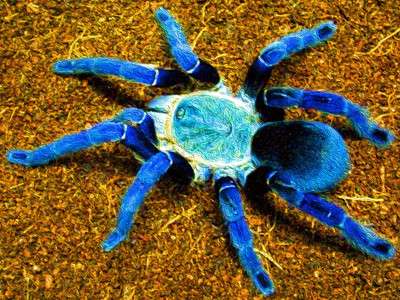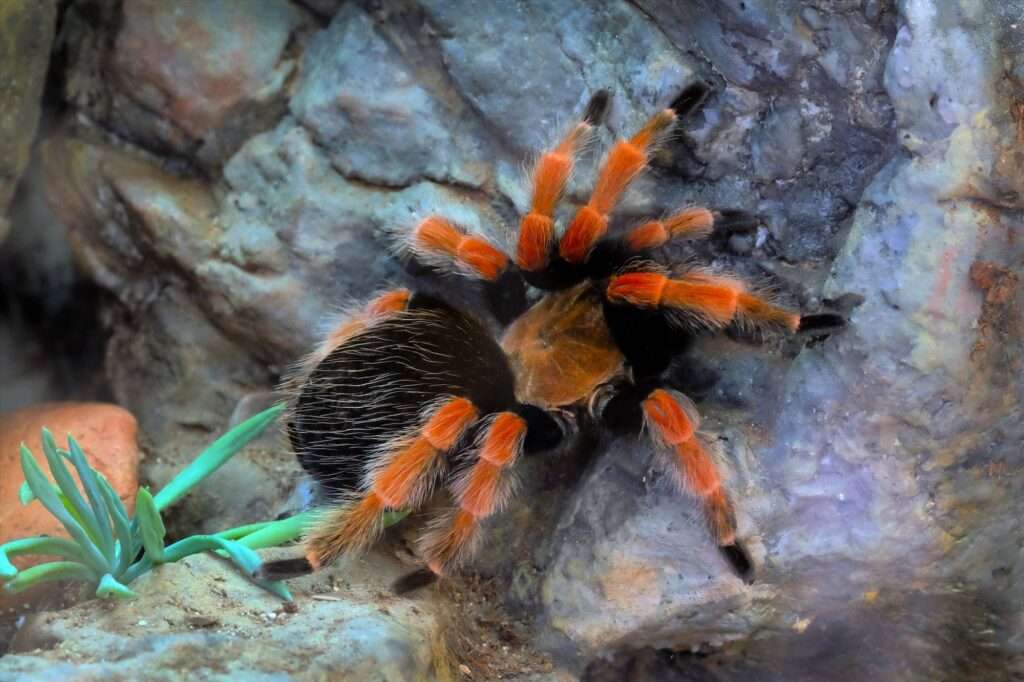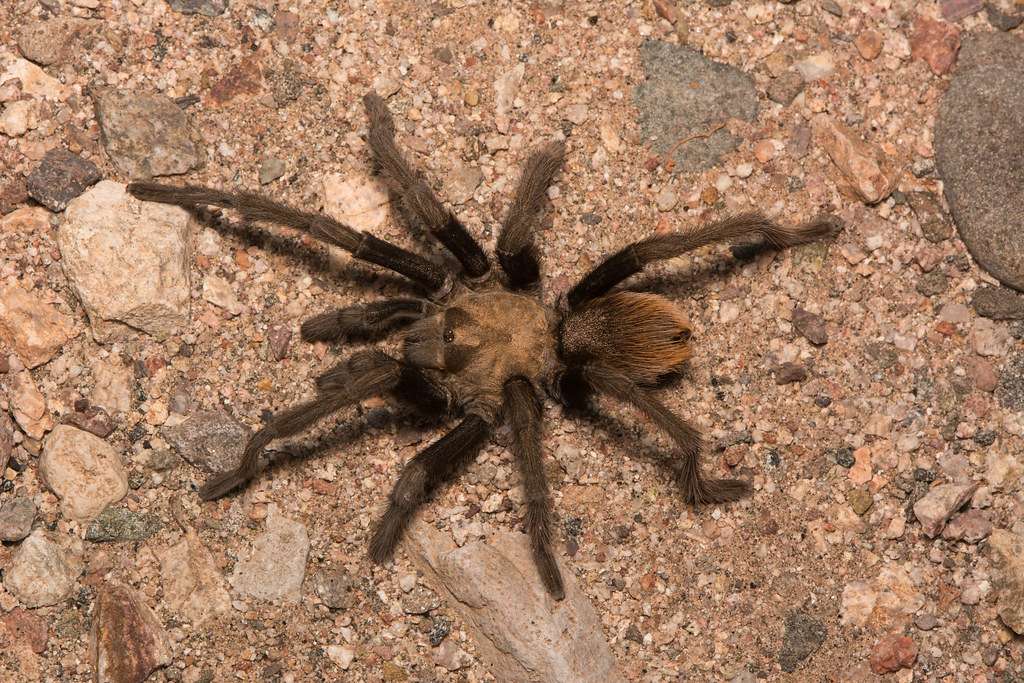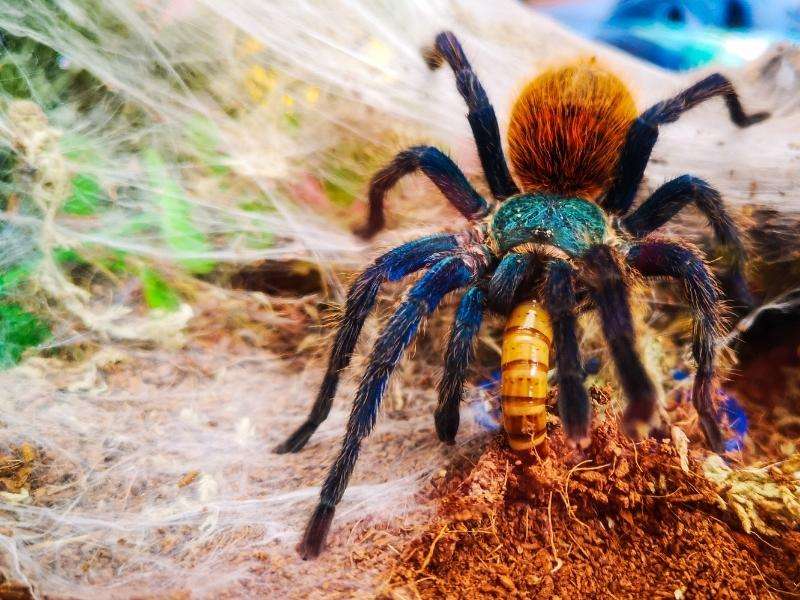
The solitary species of South American tarantulas in the genus Chromatopelma is Chromatopelma cyaneopubescens. They are exceptionally active and quickly growing tarantulas that are especially alluring to enthusiasts. They are also commonly known as green bottle blue tarantulas due to their metallic blue legs and blue-green carapace.Burnt orange and bold green with bright blue legs, green bottle blue tarantulas are striking. Their belly is coated in orange bristles that resemble fur, and their carapace is covered in bristles that are greenish in color. Green bottle blue has two pronounced black eyes that give them a comical appearance, in contrast to certain tarantulas whose eyes you can hardly see. There are also the other six eyes, but they are smaller.
Appearance
Abdomen and Carapace
These vibrant tarantulas feature an orange abdomen and a greenish carapace (head portion) (back section).
Legs
Their eight vivid blue legs give them even more color. Bristles that resemble fur exist all over their body and legs, especially on their abdomen.
Eyes
They have two eyes that are noticeably larger than the others and protrude out of the tops of their heads.
Spiderlings
The spiderlings have a very distinctive appearance. They appear significantly differently when they are born. Green, blue, and orange people are not born. They have dark brown abdomens and pink legs upon birth. Red and black stripes alternate on their bellies. With each moly, their coloring improves until it resembles the adult green, blue, and orange version.
Size
When fully grown, they can reach a height of 2.75 inches and have legs that are at least 6 inches long. In contrast, NASA research found that women’s typical adult hands are 6.8 inches in length and men’s are 7.6 inches. These spiders are roughly the size of a hand.
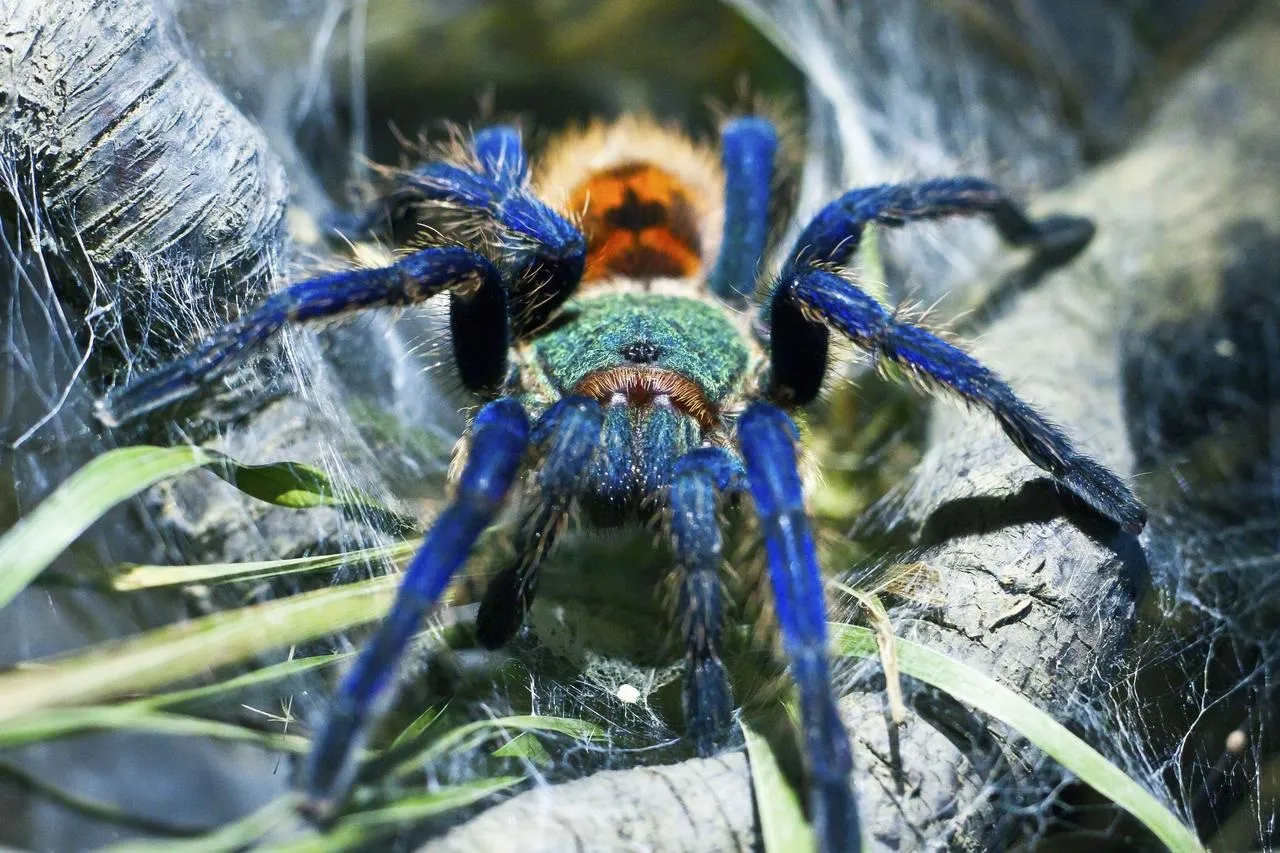
Habitat
The Paraguana Peninsula in Venezuela is home to South American green bottle blue tarantulas. They spend the majority of their time on the forest floor and are both terrestrial and semi-arboreal, which means they can climb and weave webs in lower branches of trees and bushes.
They live in holes built around fallen tree limbs, stumps, and vegetation. For protection and to catch insects and other small animals for food, they build several webs both inside and outside of their burrows. The spiders are additionally shielded from the elements by the funnel-shaped webs.
What Food Does a Green Bottle Blue Tarantula Consume?
Insects, small birds, worms, and small mice are also prey items for green bottle blue tarantulas. Whatever occurs to stray and get entangled in their webs. They can be fed dubia roaches, mealworms, or crickets in captivity. Every two to three weeks, they might eat two dubia roaches or 5-7 huge bugs.
Reproduction
For tarantulas, reproduction is a delicate ballet where the males’ main objective is to reproduce without being eaten. Female green bottle greens in captivity are quite selective and won’t mate with just any guy placed in their enclosure. It is believed that wild females have similar preferences. Their distinctive coloring may influence the choice of partner. A male green bottle blue will weave a sperm web and then transmit his sperm to the female if he finds a receptive mate. They are therefore aware of the need to leave right soon to prevent being eaten. The males do finish their life cycle after mating and pass away within a few weeks to months.
Lifespan
Green bottle blue tarantula females live 12–14 years, whereas males live much shorter lives. Men live for three to four years.
As Pet Conditions
Because they are an arid species, greenbottle blue tarantulas should be kept in well-ventilated, low-humidity conditions. The ideal humidity range is between 50 and 60 percent, or about the level of a UK average room. For this, we suggest an enclosure that is at least 45 x 45 x 45cm (18 x 18 x 18″).
Table



